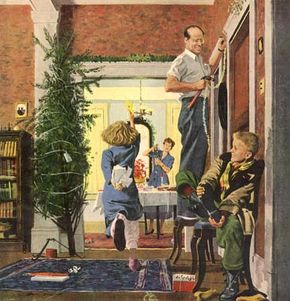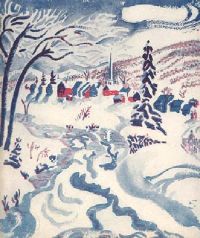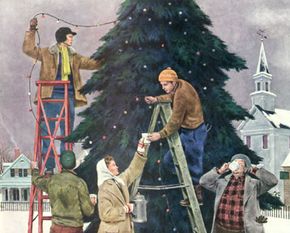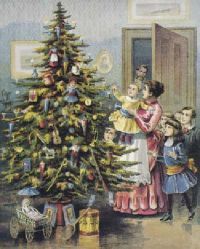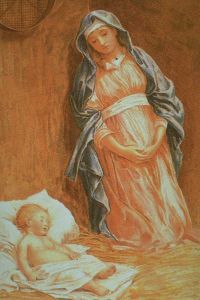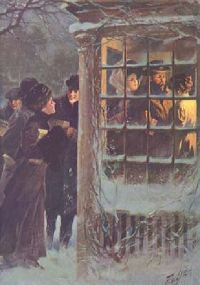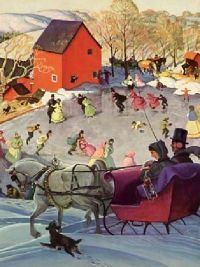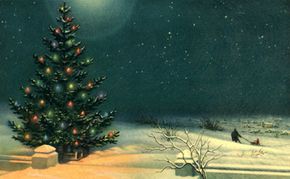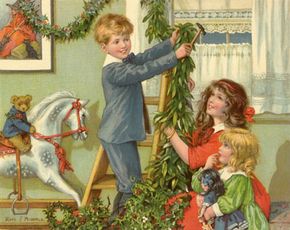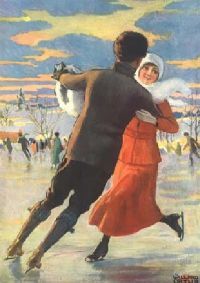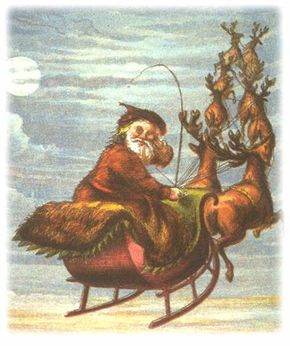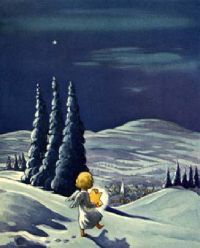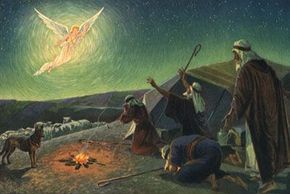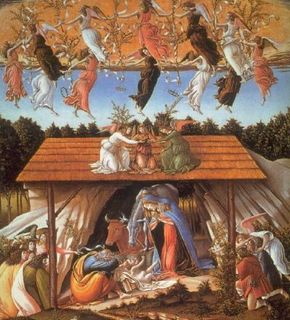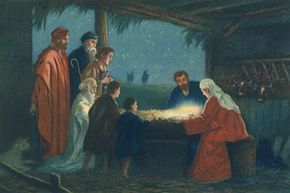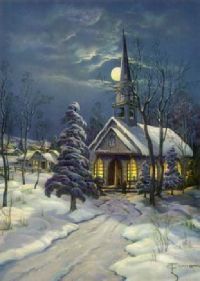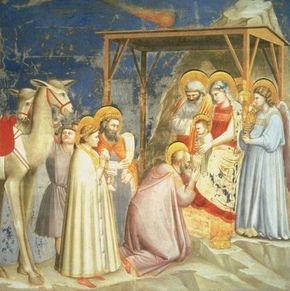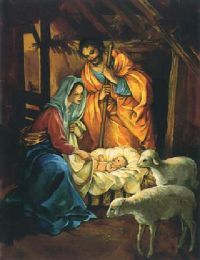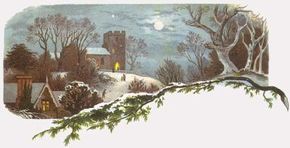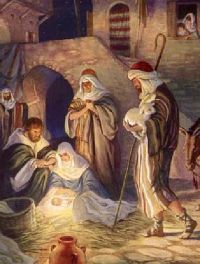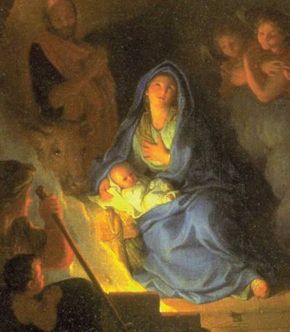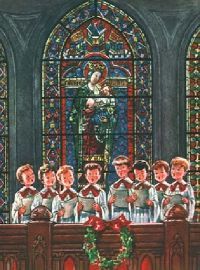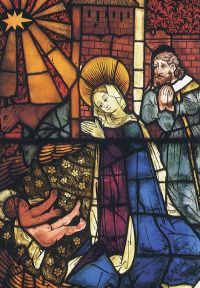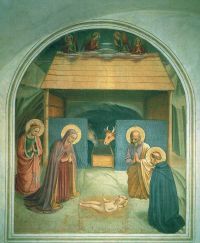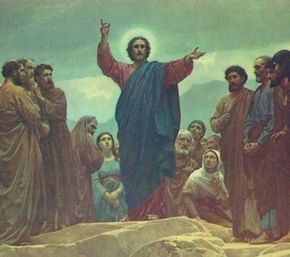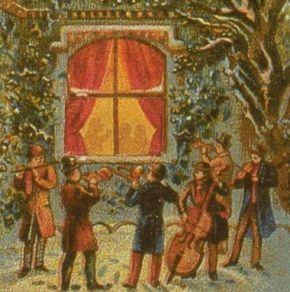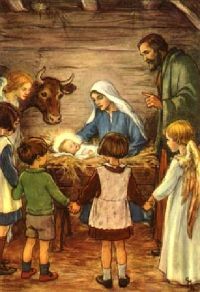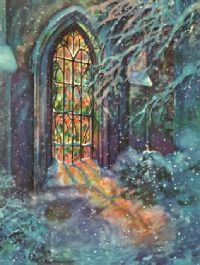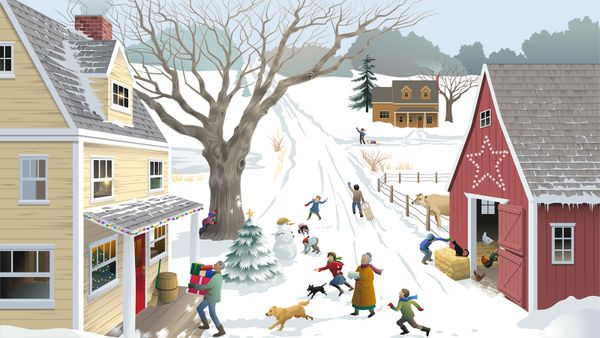
Close your eyes and listen for the bells. Imagine the snow falling softly in the cozy glow of evening. Expect the smell of evergreen. You've arrived at a place somewhere between your heart and soul: the world of Christmas songs.
If you've yet to discover the stories behind some of the Christmas standards you've been hearing -- and playing and singing -- your entire life, you're in for a treat. Some of the carols you will read about in this article are steeped in the mystery of medieval chants.
Advertisement
Others began as church sermons, prayers, or meditations. From famed classical composers to pop lyricists, from Broadway theater producers to simple pastors, the lyricists and composers included here are filled with the results of faith and talent -- rich musical gifts that have transcended centuries.
To help guide you though your own Christmas season, we've selected a holiday menu of favorites -- songs you never grow weary of hearing. Learn a bit about how these songs came to reach our ears as you peruse the included histories. We've also included lyrics to each of these Christmas songs and -- for you musicians out there -- sheet music that can be downloaded.
All told, we cover 35 Christmas songs in this article, including:
- "Deck the Halls" "Deck the Halls" -- one of the all-time Christmas favorites -- is a "melting pot" song. Its melody has traditional Welsh roots, but its lyrics came from the United States in the nineteenth century. You can't listen to this buoyant song without getting into the Christmas spirit. Learn about its history and reacquaint yourself with the lyrics.
- "Good King Wenceslas" "Good King Wenceslas" is a tribute to a beloved ruler whose kindness has never been forgotten. King Wenceslas (who was actually the Duke of Bohemia) was silenced by a jealous brother in 929, but centuries later, his memory surfaced as the subject of this children's song written by John Mason Neale.
- "Christmas is Coming" "Christmas is Coming" is a classic Christmas round. The author of the lyrics is unknown, but the music was composed by Edith Nesbitt in the late nineteenth or early twentieth century.
- "The Twelve Days of Christmas" "The Twelve Days of Christmas" was written sometime during the sixteenth century to honor the Christmas custom of giving 12 gifts to loved ones, one every day from Christmas to Epiphany. Whether singing of golden rings or fat geese, those unable to buy such luxuries could at least hold these lyrics as promises of heartfelt gifts to come during this glittering season of giving.
- "Ave Maria" Few sacred hymns are as universally known as "Ave Maria." Originally a Roman Catholic prayer, "Ave Maria" was actually derived from biblical scripture: Luke 1:28. Franz Schubert orchestrated this version of the hymn in 1825. Many people consider "Ave Maria" to be the most sacred of all hymns.
- "Here We Come A-Wassailing" Also known as "Here We Come A-Caroling" and "The Wassail Song," this jolly English ditty is steeped in tradition. Imagine a British cobblestone street, snow soft in the streetlight's glow. Despite constant hardship, beggars and orphans would dance and sing in the streets at Christmas, hoping to receive a bowl of wassail, which combines ale, wine, and spices to warm the heart as well as the soul.
- "Jingle Bells" Some songs are known for their appeal to adults; others for their popularity with children. "Jingle Bells" enchants both audiences, but it might surprise you to know that the original music, composed by Boston Sunday school teacher James Pierpont, was conceived as a Thanksgiving song in 1857.
- "O Christmas Tree" Folktales describing how evergreen trees came to symbolize Christmas can be found in nearly every culture. Centuries-old lore describes evergreen trees blooming in every forest on earth the night Jesus was born. These stories are the basis of the ageless German song that praises all trees at Yuletide: "O Tannenbaum," or "O Christmas Tree."
- "The Holly and the Ivy" "The Holly and the Ivy" likely originated as a print ad posted in England around 1700. The song was published in 1861 by Joshua Sylvester, who admitted to its commercial heritage. Though lavished with symbols predating Christianity, this song's lyrics don't completely explain the meaning behind the greenery in its title.
- "Dance of the Sugar Plum Fairy" Peter Ilyich Tchaikovsky completed his ballet "The Nutcracker" in 1893. First performed at St. Petersburg's Maryinsky Theater the following Christmas, "The Nutcracker" continues to thrill audiences -- particularly those eagerly awaiting the ballet's crown jewel: "Dance of the Sugar Plum Fairy." To read the story "The Nutcracker," click here.
- "Up on the Housetop" When Clement Clarke Moore penned "A Visit From St. Nicholas" as Christmas entertainment for his children, he probably had no idea that his story would continue to be told for hundreds of years. The charming tale of Santa's annual visit has been chronicled for all time as "Up on the Housetop." If Moore hadn't revealed Santa's entry point and Benjamin Russell Hanby hadn't later set it to music, children everywhere might still wonder how all those Christmas presents are delivered!
- "Jolly Old Saint Nicholas" This traditional American jingle sums up every child's Christmas dream -- finding out what treasured gifts Santa will be leaving under the tree this year. "Jolly Old Saint Nicholas" is a bouncy and fun-filled Christmas classic.
- "It Came Upon a Midnight Clear" "It Came Upon a Midnight Clear" got its lyrics from a poem by Edmund Hamilton Sears, a Unitarian minister. American poet Oliver Wendell Holmes described this hymn as "one of the finest and most beautiful ever written." Listen to it, and you'll realize that Holmes was right.
- "While Shepherds Watched Their Flocks" "While Shepherds Watched Their Flocks" is especially beloved by those who appreciate a literal interpretation of the nativity story. This hymn closely replicates the Bible's description of events on the night of Jesus' birth.
- "Angels We Have Heard on High" "Angels We Have Heard on High" began as a shepherd's exclamation ("Gloria in excelsis Deo!") shouted from hill to hill to celebrate Christmas. The version we sing today was first published in 1855.
- "Hark! The Herald Angels Sing" Composer Felix Mendelssohn wrote the music for "Hark! The Herald Angels Sing" for a cantata dedicated to Johannes Gutenberg. The tune was later matched with words written by Charles Wesley, a Methodist poet.
- "We Three Kings of Orient Are" "We Three Kings of Orient Are" was written in 1857 for an elaborate holiday pageant. It depicts the journeys of the three wise men who traveled from separate parts of the globe to pay homage at the crib of Jesus in Bethlehem.
- "Angels from the Realms of Glory" "Angels from the Realms of Glory" is a reverential carol by James Montgomery and Henry Stuart. It celebrates the angels who first told shepherds in their fields of the Messiah's birth. For those who want to really get into the Christmas spirit, it's well worth a listen.
- "Coventry Carol" It is speculated that "Coventry Carol" has its roots in melodies that women of Bethlehm would sing to their firstborn sons during King Herod's reign of terror, when he ordered the murder of all infant sons to ensure the death of newborn Jesus. As you can see from the subject matter, this Christmas song is known for its intensity.
- "O Little Town of Bethlehem" Minister Phillips Brooks wrote "O Little Town of Bethlehem" after traveling to Bethlehem and finding himself deeply moved by the experience. It was premiered by his church's children's choir in 1868 and developed into a Christmas classic in the ensuing years.
- "Silent Night" In 1818, a broken organ forced Father Joseph Mohr and organist Franz Gruber to pull together "Silent Night" for voices and guitars at the last minute. They barely finished in time for their Bavarian village's Christmas Eve celebrations. It's a good thing the song was completed -- "Silent Night" has enchanted generations of listeners. To read the inspirational story of how "Silent Night" came to be, click here.
- "Away in a Manger" "Away in a Manger" is of unknown origins, although many people have been considered possible composers (including Martin Luther and James R. Murray). While the mystery surrounding "Away in a Manger" continues, one thing is certain: This lullaby continues to soften hearts during the holidays.
- "Bring a Torch, Jeannette, Isabella" "Bring a Torch, Jeannette, Isabella" probably originated as a a lively court dance in fourteenth-century France. The song as we know it was first published in 1553 by a well-to-do nobleman. Read the lyrics, and you'll see that it's an interesting addition to our collection of Christmas songs.
- "What Child Is This?" "What Child Is This?" shares its melody with that of the traditional English song "Greensleeves." Words from the Dix poem "The Manger Throne" were added to "Greensleeves" to form the Christmas carol we know today.
- "Good Christian Men, Rejoice" "Good Christian Men, Rejoice" originated as "In Dulci Jubilo" in 1601 and has undergone many transformations since then. The version we sing today was translated from German by Reverend Dr. John Mason Neale. The fact that the song has survived so many revisions speaks to its power and durability.
- "O Holy Night" This song was composed in France by Adolphe Charles Adam. Although "O Holy Night" was not initially well received by French church authorities, audiences have long loved this popular Christmas Eve solo.
- "The First Noel" This is a quintessential Christmas song. "The First Noel" most likely originated in thirteenth- or fourteenth-century Mystery Plays (dramatizations based on Bible stories) to tell the tale of Jesus' birth. The version we know was first published in 1833.
- "Go Tell It on the Mountain" "Go Tell It on the Mountain" celebrates Jesus' promise of liberation for all people. The upbeat tempo reflects the power of that promise. This rousing spiritual became popular after a performance by Fish University's Jubilee Singers in 1879.
- "Parade of the Wooden Soldiers" The originally German "Parade of the Wooden Soldiers" was written in 1905 and, once English lyrics were added by Ballard Macdonald, quickly became an American Christmas standard. But even if you listen to the American version of the song, you'll probably notice that it has German origins.
- "We Wish You a Merry Christmas" Almost everyone is familiar with this Christmas classic, which is a traditional caroling tune. Caroling groups in England, known as "waits," often employed this tune in hopes of earning a sweet treat for themselves.
- "O Come, All Ye Faithful" This is another song that seemingly everyone knows. "O Come, All Ye Faithful" (or "Adeste Fideles," as it was originally known) was first published around 1751. About a century later, it became a popular church hymn when Frederick Oakeley translated it into English from Latin.
- "Joy to the World" Here's yet another Christmas standard. The lyrics to "Joy to the World" were first attributed to George Frideric Handel -- probably a ploy by the composer to increase the song's popularity. We now know, after much research from musicologists, that the words for this melody come from the Psalms of David.
- "I Saw Three Ships" The imagery represented in "I Saw Three Ships" is still puzzling to historians. Does it represent the Trinity? Columbus's voyage? Whatever the lyricist's intent, the song has been popular since its publication in 1666.
- "God Rest Ye, Merry Gentlemen" "God Rest Ye, Merry Gentlemen" was another favorite of the caroling groups, or "waits," in seventeenth-century England. It was also used by Charles Dickens in his classic holiday story "A Christmas Carol." To read "A Christmas Carol," click here.
- "Auld Lang Syne" How can anyone ring in the New Year without a rousing round of "Auld Lang Syne?" This traditional song finds its roots in Scotland and was made popular by Guy Lombardo and the Royal Canadians.
Advertisement
